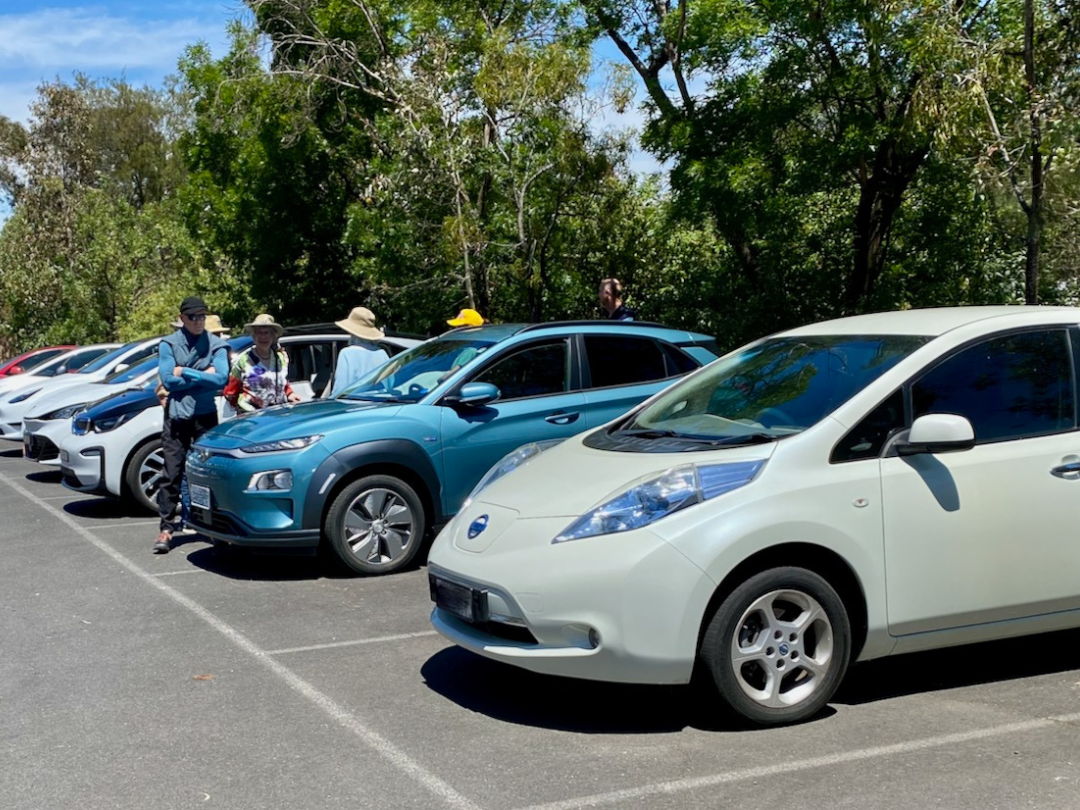Driving emissions targets

The Australian Government has announced the 2035 emissions targets, with a reduction of 62-70% from 2005 levels. To achieve this target, reductions in a number of areas will be essential. A great deal of attention has been focused on the replacement of fossil fuel energy sources by renewables, however the biggest change required will be in transport.
It is time for a major shift away from internal combustion transport to electric vehicles and that puts the challenge to reach the target firmly in our hands.
There is good news in that greenhouse gas emissions from electricity generation are dropping and they are 28% less than in 2005. This rate of reduction in itself is not enough to ensure we meet the reduction target, but the government has promised that renewable sources will account for 82% of power generation by 2030.
This is all trending in the right direction, but transport is the real sticking point. Emissions from road, rail and domestic airlines are increasing. Transport is Australia’s second biggest sectoral source of emissions, with a 22.4% increase over 20 years. Diesel vehicle use has increased 93% since 2014. (It’s worth pointing out that diesel engines produce not only greenhouse gases, but highly dangerous local pollution).
Our willingness to adopt electric vehicles will be a key factor in turning around our climate emissions. So why are we waiting?
The majority of Australian drivers continue to be more comfortable with what they know. The well-known concerns about range anxiety and the cost of vehicles have slowed down take-up of EVs.
My personal view is that most of us are uncomfortable with the unknown. I’m sure the first people to switch from horse and cart to motor vehicles were similarly hesitant.
There is no question in my mind that we should all move quickly to adopt EVs. I have driven an EV for over 3 years now. This has included 2 trips to Far North Queensland, trips around Victoria and including the Silo Art Trail, and frequent trips to Geelong. At no point have I encountered any of the issues people are so concerned about – even with highway EV charging still in its infancy.
Most EVs, like my car, offer free, or low cost servicing (and free roadside assistance, with a call button in the car). I have just had our second car service. This included a thorough check, replacement of internal air filters and new wiper blades. On the service side – that’s it – and free. I did also elect to replace the front tyres – after a respectable 65,000km. Adding it all up, the yearly cost of the car is a fraction of what I used to spend on our small petrol vehicle.
There is no getting away from the fact that an EV is incredibly cheap to run.
And there’s the beauty of an EV. Nothing to oil or grease. Very few moving parts. Mechanically, it is simple. The car is also clean and quiet. We notice that we are less tired driving distance in this car, without the constant noise and vibration from a motor.
On the fuel side, I charge from my home’s excess solar energy. Plugging in at home beats having to go to a service station and handle volatile hydrocarbon fuel. When I charge on the highway, the process is simple and usually fits into a lunch or coffee break. The cost of highway charging is still well below the cost of petrol.
The good news is that the price of an EV is dropping. As technology improves, the cost of an EV heads downwards. In Europe, large electric SUVs have already reached price parity. We can expect to see EV prices drop below those of a standard vehicle very shortly.
There are so many reasons to choose an EV, if only for the benefits they bring to our home budget and our comfort levels. The occasions when I drive regular cars, as I did recently with a current model petrol car from the same manufacturer as our EV (and based on the same wheelbase as ours), had me longing to be back in my car.
While I also strongly support public transport, e-bikes and bicycles, the reality is most of us will still choose to drive a car. If we are choosing to use this mode of transport, the obvious decision is to plan for having an EV. Not only will we be playing a part in driving Australia in the right direction, we will be doing ourselves a huge favour.
Written by Paul Gale-Baker
Further reading
National Greenhouse Gas Inventory Quarterly Update: March 2025
https://www.dcceew.gov.au/climate-change/publications/national-greenhouse-gas-inventory-quarterly-update-march-2025
What is happening with Australia’s emissions? Electricity is improving. Transport is not.
https://www.theguardian.com/australia-news/2025/aug/25/what-is-happening-with-australias-emissions-electricity-is-improving-transport-is-not
‘It’s been a challenge’: Bowen admits drivers slow to switch to EVs – The Age, September 19, 2025
https://www.theage.com.au/environment/climate-change/evs-must-charge-to-85-per-cent-of-all-new-car-sales-to-meet-albanese-s-climate-target-20250918-p5mw6q.html
How Australia plans to reach net zero greenhouse gas emissions by 2050 – The Guardian, September 19, 2025
https://www.theguardian.com/australia-news/2025/sep/18/how-australia-plans-to-reach-net-zero-greenhouse-gas-emissions-by-2050
Labor’s 2035 emissions target may be middle of the road but it shows there’s no going back on climate – The Guardian, September 19, 2025
https://www.theguardian.com/environment/2025/sep/19/labors-2035-emissions-target-may-be-middle-of-the-road-but-it-shows-theres-no-going-back-on-climate
The climate conversation is stuck in a loop, but out in the world things are changing – The Age, September 19, 2025
https://www.abc.net.au/news/2025-09-19/climate-conversation-is-stuck-but-things-are-changing/105787796
Graph of the Day: EVs are nearing price parity with petrol and diesel cars – The Driven, July 7, 2025
https://thedriven.io/2025/07/30/graph-of-the-day-evs-are-nearing-price-parity-with-petrol-and-diesel-cars/
2035 Emissions Reduction Targets Advice released – The Climate Change Authority, September 18, 2025
https://www.climatechangeauthority.gov.au/
